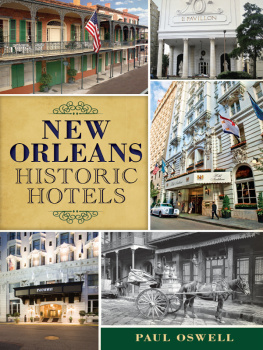Donaghue - Kittery
Here you can read online Donaghue - Kittery full text of the book (entire story) in english for free. Download pdf and epub, get meaning, cover and reviews about this ebook. City: Kittery (Me.);Maine;Kittery, year: 2016, publisher: Arcadia Publishing Inc., genre: Home and family. Description of the work, (preface) as well as reviews are available. Best literature library LitArk.com created for fans of good reading and offers a wide selection of genres:
Romance novel
Science fiction
Adventure
Detective
Science
History
Home and family
Prose
Art
Politics
Computer
Non-fiction
Religion
Business
Children
Humor
Choose a favorite category and find really read worthwhile books. Enjoy immersion in the world of imagination, feel the emotions of the characters or learn something new for yourself, make an fascinating discovery.

- Book:Kittery
- Author:
- Publisher:Arcadia Publishing Inc.
- Genre:
- Year:2016
- City:Kittery (Me.);Maine;Kittery
- Rating:4 / 5
- Favourites:Add to favourites
- Your mark:
- 80
- 1
- 2
- 3
- 4
- 5
Kittery: summary, description and annotation
We offer to read an annotation, description, summary or preface (depends on what the author of the book "Kittery" wrote himself). If you haven't found the necessary information about the book — write in the comments, we will try to find it.
Donaghue: author's other books
Who wrote Kittery? Find out the surname, the name of the author of the book and a list of all author's works by series.
Kittery — read online for free the complete book (whole text) full work
Below is the text of the book, divided by pages. System saving the place of the last page read, allows you to conveniently read the book "Kittery" online for free, without having to search again every time where you left off. Put a bookmark, and you can go to the page where you finished reading at any time.
Font size:
Interval:
Bookmark:

IMAGES
of America
KITTERY
ON THE COVER: The USS Thresher (SSN-593) is pictured as it was launched from the Portsmouth Naval Shipyard in Kittery, Maine, on July 9, 1960. This was the second ship given the name Thresher, and she was thought to be the lead boat in her class of nuclear-powered attack submarines. (For more information, see .) (Courtesy of Portsmouth Naval Shipyard Historical Society and the Thresher Base United States Submarine Veterans.)
IMAGES
of America
KITTERY
Andrea F. Donaghue

Copyright 2016 by Andrea F. Donaghue
ISBN 978-1-4671-1670-1
Ebook ISBN 9781439656099
Published by Arcadia Publishing
Charleston, South Carolina
Library of Congress Control Number: 2015956903
For all general information, please contact Arcadia Publishing:
Telephone 843-853-2070
Fax 843-853-0044
E-mail
For customer service and orders:
Toll-Free 1-888-313-2665
Visit us on the Internet at www.arcadiapublishing.com
This book is dedicated to my parents, my husband, and my stepson, whose love and encouragement helped me achieve my wildest dream. Thank you does not seem like nearly enough.
CONTENTS
ACKNOWLEDGMENTS
This book would not have been possible without the immense knowledge, time, assistance, and support of so many great people and organizations.
Kim Sanborn and the volunteers at the Kittery Historical and Naval Society spent many hours chatting with me, sharing photographs and memories, and generously donating their wealth of knowledge.
I thank Leigh Perkins and the entire staff of the Rice Public Library. Their photograph collection not only made this project possible, but also was so vast that it distracted me on more than one occasion.
Historian Joseph J. Gluckert, of the Portsmouth Naval Shipyard, thank you for taking a day to chauffeur me around and gift me with your extensive knowledge, wonderful tales of the shipyard, and wicked sense of humor.
Kittery police chief Theodor G. Short, thank you for taking the time to share with me what you have, introducing me to other members of your police force who have additional information, and sharing stories of back home.
Kevin Galeaz Base, commander of Thresher Base United States Submarine Veterans, thank you for directing me to Gary Hildreth, deputy of public affairs of the Portsmouth Naval Shipyard, and subsequently, Joseph J. Gluckert. I am honored to be able to share the memory of the USS Thresher and her crew with so many.
Special thanks are given to Jeanne Gamble and Abigail Cramer of Historic New England. A thank-you is owed to the US Navy via the Portsmouth Naval Shipyard.
I thank Kim Sylvester for the use of the images of Rock Rest. Im thrilled to be able to keep this piece of Kittery history alive.
A thank-you is given to my editor, Sarah, who was endlessly patient with my questions and my tardiness, and was unfailingly upbeat throughout this entire process.
INTRODUCTION
Though it was officially incorporated on October 20, 1647, Kitterys history began years before this. This area was a popular destination for European fishermen around the same time that the pilgrims were settling in Plymouth, Massachusetts. The first settlers of the Kittery and Kittery Point area were not only fishermen, but also trappers, hunters, and timber workers. The timber, fish, and animal pelts were harvested and exported back to England.
Kittery was named after the birthplace of one of its founding fathers, Alexander Shapleigh. He was born in the town of Kingsweare, in the county of Devon, England. His familys manor was named Kittery Court and was located on a point of land named Kittery Point. The Shapleigh name is still prominent in town to this very day. Interestingly, Kingsweare is but 10 miles south of the birthplace of yet another of Kitterys original settlers, Capt. Francis Champernowne. Shapleigh and Champernowne came from England together, on a ship they reportedly co-owned, and settled here in 1635. Other early families that settled in the area were the Pepperrells, Cuttses, Frosts, and Fernalds. These names are also still known in this area today.
In addition to fishing, another prominent water-related occupation for early settlers was shipbuilding. The Badger family, for which Badgers Island is named, had not one but two prominent shipbuilders in its family. William and Samuel Badger both were well-known shipbuilders in their own right. Badgers Island, originally known as Langdons Island, was also home to the first shipyards of the area, and several well-known ships were built there. The USS Ranger, made famous by Capt. John Paul Jones, was built by master shipbuilder James Hackett and his apprentice, William Badger, and was launched from Badgers Island on May 10, 1777. William Badger went on to become a master shipbuilder himself, building more than 100 vessels in his career. His nephew Samuel Badger also made his mark in the world of shipbuilding, but his uncle would always be the more well known of the two men.
On June 12, 1800, Portsmouth Naval Shipyard was established. It is the oldest continuously operating shipyard in the United States. Originally located on one island, known as Fernalds Island, the shipyard has expanded over its 200 plus years of existence. It now encompasses what used to be multiple islands but is currently just one, Seavey Island. The first US Navy vessel to be built and launched from here was the USS Washington, in 1814. As time passed and technology grew by leaps and bounds, Portsmouth Naval Shipyard (PNS) established itself as a necessity to the Navy. During World War I, PNS separated itself from other shipyards not only for overhauling and repairing ships, but also for building the most technologically advanced ships of the time, submarines. From 1917 to 1969, over 130 submarines were built and launched from here.
The histories of some of Kitterys family homes are almost as old as the town itself. The first house built here was built in Kittery Point by Nicholas Shapleigh for the Bray family, and it is thought to have been constructed sometime around 1662. The house still stands today overlooking the Piscataqua River and the Atlantic Ocean. Other popular family homes still standing are the William Pepperrell Mansion, built in 1683, as well as the Lady Pepperrell House, built in 1760. The birthplace of William Whipple, one of the signers of the Declaration of Independence, was constructed in 1665. The Pelatiah Fernald House was built in 1798 and is recognizable from its distinctive three chimneys. The Dennett Garrison, home of the Dennett family, was built in 1710. Unfortunately, there were some historic houses that did not survive to the 21st century. Sparhawk Hall, built for Elizabeth Pepperrell Sparhawk by her father, William Pepperrell, was built in 1742 but was torn down in 1967.
Historic homes are not the only architecture in Kittery worth noting. Kittery Point and Kittery both had their share of grand hotels during the Victorian era. All of them were built around the same time, the 1880s, and they were, unfortunately, lost around the same time as well, the 1920s. When decadence was the norm, the hotels of the Victorian era were all the epitome of grandeur. Thanks in part to the many modes of transportation in the area, they were also fairly easy to travel to. From boats to trains, trolleys to carriages, the well-to-do of the late 19th century and early 20th century were able to travel here and enjoy their off time with much class. It is interesting to see how travel evolved for those living here and traveling here. From horses, carriages, and boats to trains, trolleys, and automobiles, the evolution of transportation in this area is clearly defined and recorded through pictures. Though many of these ways to get around have since become irrelevant, hints of their existence still linger.
Next pageFont size:
Interval:
Bookmark:
Similar books «Kittery»
Look at similar books to Kittery. We have selected literature similar in name and meaning in the hope of providing readers with more options to find new, interesting, not yet read works.
Discussion, reviews of the book Kittery and just readers' own opinions. Leave your comments, write what you think about the work, its meaning or the main characters. Specify what exactly you liked and what you didn't like, and why you think so.








